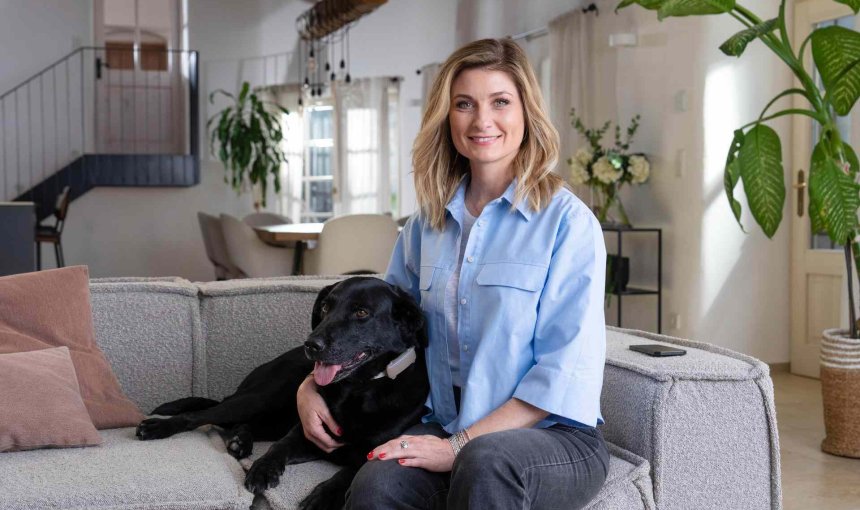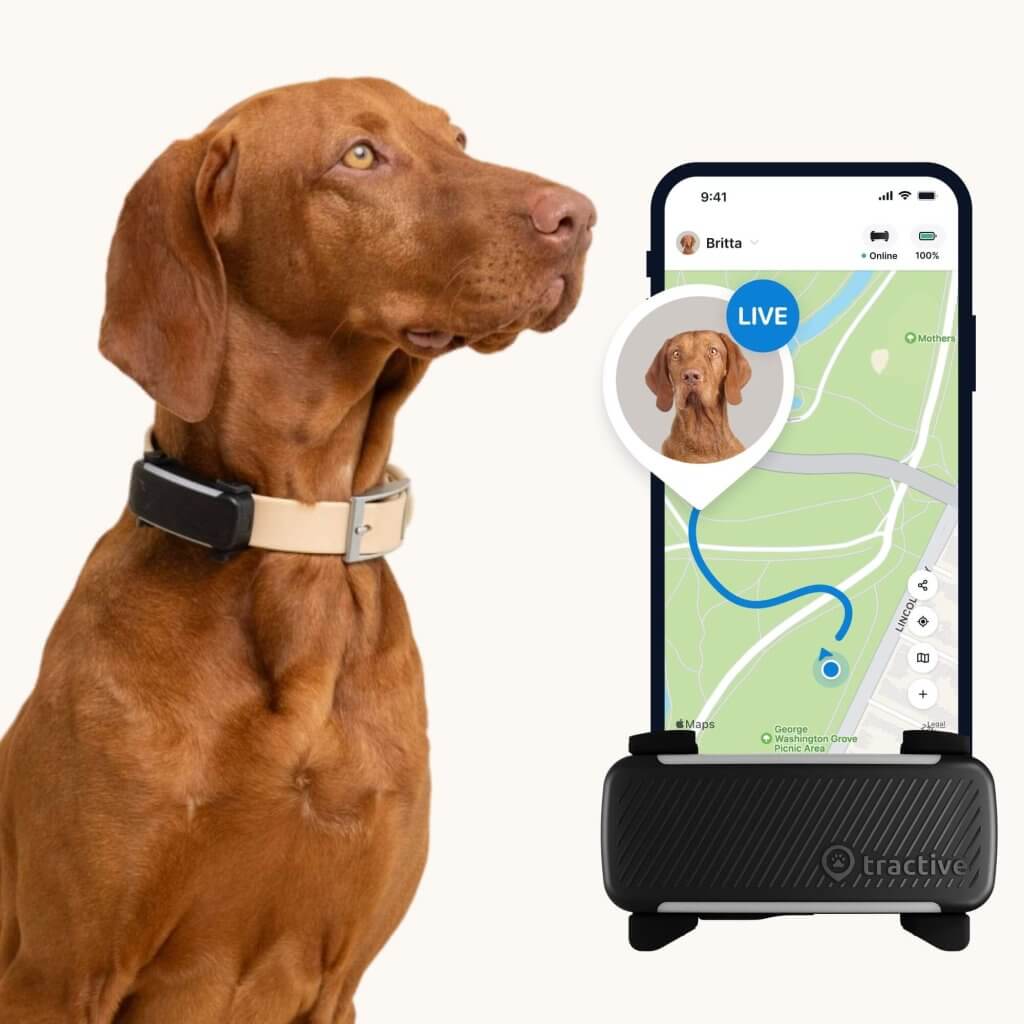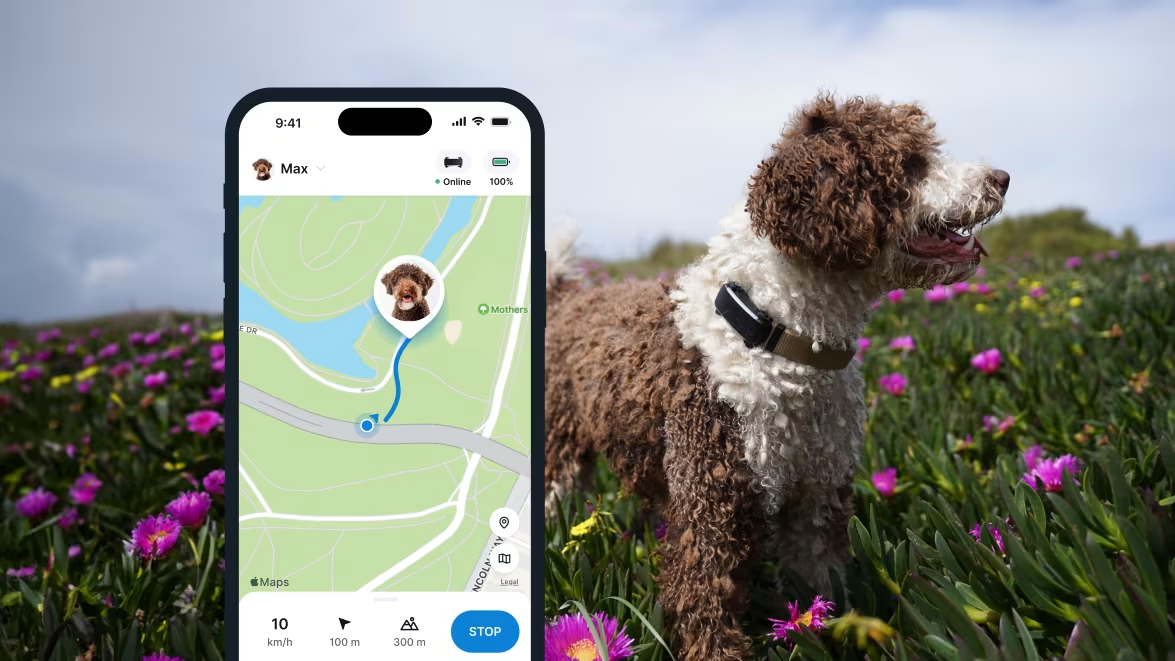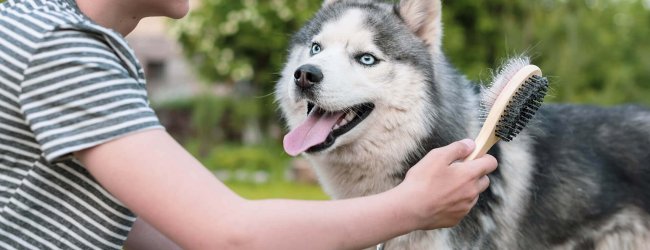Moving With A Dog: Tips For A Stress-Free New Home
Moving house with a dog and not sure where to start? Here's all the homework you need to do to ensure it's a safe, stress-free journey.

Moving with pets can be both exciting and stressful — both for you and your furry friend. If you’re wondering, how long does it take for a dog to adjust to a new home? the answer can vary based on your dog, their past experiences, and how smoothly you handle the transition. So here’s your step-by-step guide to moving house with a dog while ensuring your pup stays safe, happy, and secure. (And where a dog GPS tracker can step in as an emergency measure.)

Always know your buddy is healthy & safe
Read more- Be prepared for any paperwork
- Start with a first-time visit (if you can)
- Stick to your dog’s routine even with the move
- Bring your dog over safely
- How long does it take for a dog to adjust to a new home?
- How to help your dog settle into their new home easier
- Plan ahead for an emergency
- Ready for a smooth move to your new home?
Be prepared for any paperwork
Moving with a dog isn’t just about packing and logistics. It also involves important paperwork and legal requirements for your pup. Here are some key steps to take before you get started:
- Check breed or pet restrictions
If you’re moving into an apartment, double-check if they have any pet policies and breed restrictions. Some places have specific rules about certain breeds or sizes of dogs. - Find out about any entry requirements for pets
Especially if you’re moving abroad or flying with a dog. Some countries require special vaccinations or quarantine measures, which you should plan in good time. If you’re based in Europe, the EU pet passport is essential, as is a valid rabies vaccination certificate. - Update your dog’s microchip and ID tags
Ensure your dog’s microchip information is updated with your new details. If your dog wears an ID tag, get a new one with your updated details before the move. - Transfer veterinary records
If you’re moving cities or states, ask your current vet for copies of your dog’s medical records. Research and register with a new vet ahead of time in case of emergencies. - Update pet registration and licenses
Check the local regulations for pet licensing in your new area. Some cities require dog registration, and failing to update this could result in fines. - Research local pet services
Before moving day, look up any nearby dog-friendly parks, walking trails, and pet stores. Finding a trusted groomer, pet sitter, or daycare ahead of time can help with the transition. - Update your dog’s insurance
If you have pet insurance, notify your provider about your new address and confirm coverage in your new area.
Start with a first-time visit (if you can)
A “new” and unfamiliar environment can make moving with a dog that much more difficult. So start by visiting the new home with them in advance, away from all the stress of the move. (If possible.) Let them explore the empty space, sniff around any corners, or find the best patch of sunlight. This will help them familiarize themselves with their new surroundings in peace and quiet and also settle in quicker and easier.
Do your best to ensure this “first” experience is a positive one. Bring along some of your dog’s favorite toys and treats or play some of their favorite games in the new space. This can help warm them up to the new space and be happy to return there.
⚠️ Some dogs might react with so much anxiety if you bring them to an unfamiliar environment, they might try and escape. (Likely back home!) In these cases, a dog GPS tracker can help you track their every step in real-time, so you can find yours with just a glance at your phone.

Follow your dog anywhere
Get real-time location information, wherever they go. And find out when they try to make an escape, or just when they go somewhere they shouldn’t, with Virtual Fences.
Stick to your dog’s routine even with the move
Your buddy’s routine can be majorly shaken up with the stress of the move. Which means they’re more likely to behave anxiously or feel stressed out from the hustle and bustle around them and before they’ve arrived. Sticking to their feeding, walks, playtime, and quality time can go a long way in helping them feel like things are still “normal”, despite everything.
If your dog tends to be anxiety-prone anyway, it’s probably better to leave them with a friend, loved one, or a trusted dog sitter. So they can enjoy some peace, quiet, and company away from the hassle of packing and transporting. (Plus, it’ll speed things up for you as well.)
💡Pack your dog’s things only at the very end, if they’re staying with you throughout the process. This can help them feel safe for as long as possible. Likewise, instead of bringing in boxes all at once, introduce them slowly so your dog can slowly get familiar with them.
Bring your dog over safely
If you’re moving house with a dog over a long distance, it’s essential you transport them safely. This helps them arrive at their new home relaxed and less likely to be howling, barking, peeing, or even puking in your backseat out of stress.
If your dog isn’t used to being in a crate or carrier, it’s best to slowly introduce it to them to ensure you both drive safely. Make sure they’re also properly leashed and harnessed when you stop to take breaks. (Especially to let your buddy drink, pee, or stretch their legs.) Bring along their favorite toys or blankets to keep them calm throughout the journey.
Read more: How To Travel With A Dog: Tips For A Fun Road Journey
How long does it take for a dog to adjust to a new home?
Every dog reacts differently to a move. Some will feel at home within a few days, while others may take weeks or even months to fully settle in.
| Signs your dog is adjusting well: | Signs your dog needs extra support: |
| ✅ Eating and drinking normally | 🚩 Persistent loss of appetite or digestive issues |
| ✅ Playing, exploring, and engaging with you | 🚩 Destructive behavior or hiding |
| ✅ Sleeping well and showing relaxed body language | 🚩 Difficulty settling down in one place |
| ✅ Barking less and staying calm when left alone | 🚩 Pacing, whining, or excessive barking |
Do your best to be patient if your buddy seems more anxious during the first few days. They might be reluctant around meals, want to hide in your arms all day, or seem restless or antsy. Give them time to settle in and never reject any cuddles or quality time. All these steps help build up trust and help them grow familiar with their new environment that much better.
💡If you’re moving into a new home with roommates, family, or other pets, don’t force interactions right away. Your dog needs some time to settle before introducing new people or animals.
How to help your dog settle into their new home easier
Once you’ve arrived, your dog will need time to adjust. Here’s how to ease the transition:
- Set up your dog’s safe space immediately
Before unpacking everything else, set up your dog’s bed, food bowls, and toys in a quiet corner. The familiar smells will help them feel more at home. - Stick to their routine
Try to maintain regular mealtimes, walks, and play sessions. The more consistency you provide, the faster they’ll settle in. - Explore the new home together
Walk your dog around the house and let them sniff and investigate at their own pace. If you have a yard, supervise their first few explorations. - Go on walks around the neighborhood
If possible, stick to familiar walking routes near your new home or explore the area gradually. Let your dog take in the scents and sounds to help them feel at ease. - Monitor for signs of stress or anxiety
Some dogs may experience separation anxiety or increased barking in a new home. A GPS & Health Tracker with Bark Monitoring can alert you to excessive barking when you’re not around, so you can step in to help. Separation Anxiety Monitoring can track changes in behavior – like restless pacing – letting you know if your dog is struggling with the transition.

And finally…
Plan ahead for an emergency
The stress of an unfamiliar environment, new dogs in your neighborhood or loud noises can all spook your dog and make them anxious. In the worst case scenario, this might end up with an escape attempt – where, in this new environment, your dog might find it difficult to find their way back home to you.
💡 But with a Tractive device strapped to their collar, you can track your dog’s every move in real-time – as they make their every move, no matter how far they run off to.

Besides, you can also:
- Set up a “safe zone” around your home or backyard
And get an escape alert if your dog ends up sneaking past it. (Great for if you’re living near an unsafe, busy road.) - Figure out your dog’s favorite hangout spots
Via their Heat Map & Location History. So you can figure out where to look first in case your dog ends up getting lost. - Locate your dog indoors
With your tracker’s built-in Bluetooth, Light & Sound, or even Augmented Reality features. Perfect for small dogs that might end up getting lost or stuck somewhere weird indoors and where you need to find them at close-range. - Share your dog’s location with loved ones
With Family Sharing, so you can make keeping your dog safe a team effort.
🐶 All this in one device – built with love for dogs and for your peace of mind as a dog parent.
Ready for a smooth move to your new home?
Moving house with a dog can be stressful – but with a bit of planning and prep, it doesn’t need to be. Keep an eye on their behavior and make sure they feel safe. You’ll both be enjoying your new home, stress-free, in no time.



